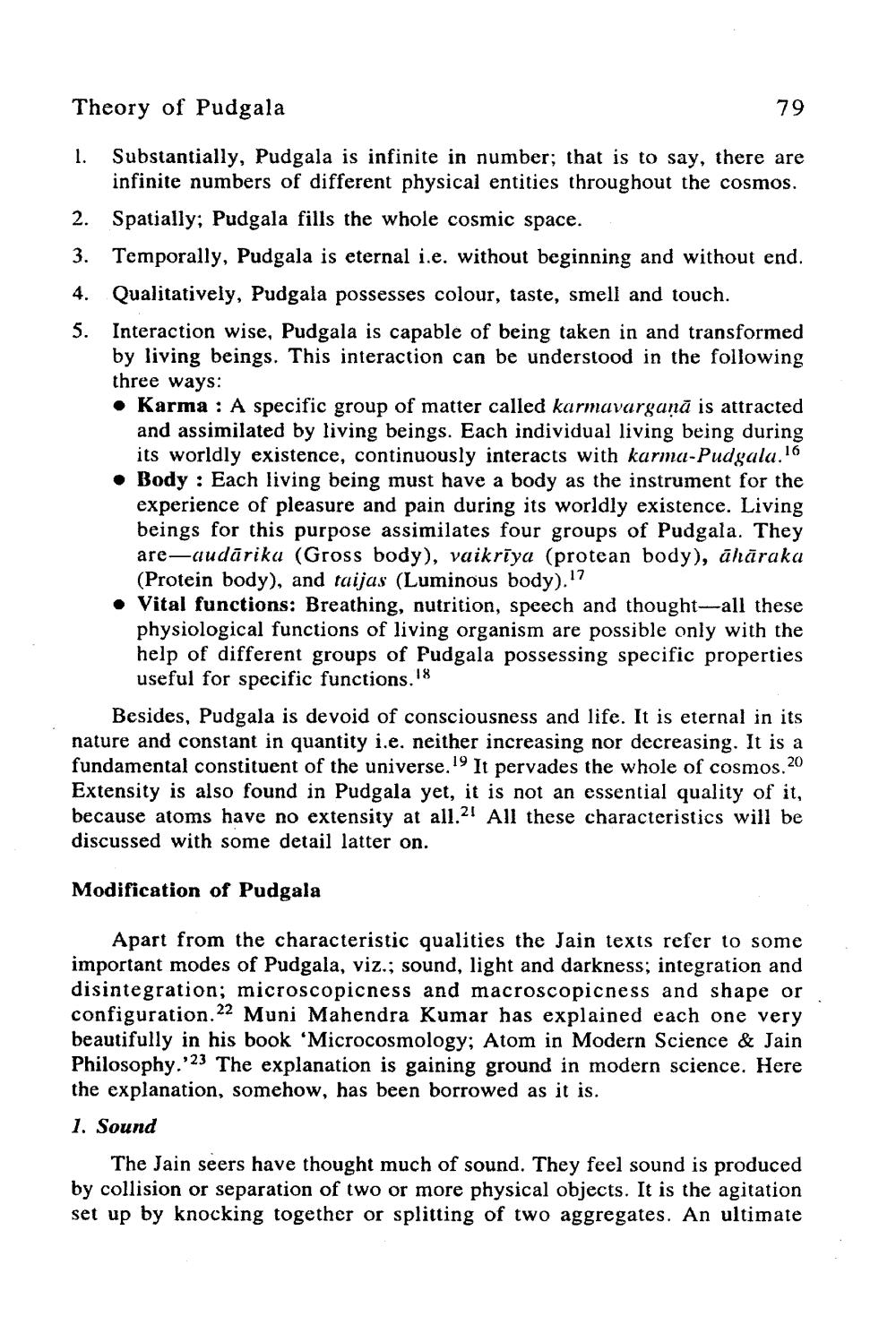________________
Theory of Pudgala
1. Substantially, Pudgala is infinite in number; that is to say, there are infinite numbers of different physical entities throughout the cosmos. 2. Spatially; Pudgala fills the whole cosmic space.
3. Temporally, Pudgala is eternal i.e. without beginning and without end. 4. Qualitatively, Pudgala possesses colour, taste, smell and touch.
5. Interaction wise, Pudgala is capable of being taken in and transformed by living beings. This interaction can be understood in the following three ways:
• Karma: A specific group of matter called karmavargaṇā is attracted
and assimilated by living beings. Each individual living being during its worldly existence, continuously interacts with karma-Pudgala.16 • Body: Each living being must have a body as the instrument for the experience of pleasure and pain during its worldly existence. Living beings for this purpose assimilates four groups of Pudgala. They are-audārika (Gross body), vaikrīya (protean body), āhāraka (Protein body), and taijas (Luminous body), 17
• Vital functions: Breathing, nutrition, speech and thought-all these physiological functions of living organism are possible only with the help of different groups of Pudgala possessing specific properties useful for specific functions.18
79
Besides, Pudgala is devoid of consciousness and life. It is eternal in its nature and constant in quantity i.e. neither increasing nor decreasing. It is a fundamental constituent of the universe. 19 It pervades the whole of cosmos.20 Extensity is also found in Pudgala yet, it is not an essential quality of it, because atoms have no extensity at all.2 All these characteristics will be discussed with some detail latter on.
Modification of Pudgala
Apart from the characteristic qualities the Jain texts refer to some important modes of Pudgala, viz.; sound, light and darkness; integration and disintegration; microscopicness and macroscopicness and shape or configuration. 22 Muni Mahendra Kumar has explained each one very beautifully in his book 'Microcosmology; Atom in Modern Science & Jain Philosophy.'23 The explanation is gaining ground in modern science. Here the explanation, somehow, has been borrowed as it is.
1. Sound
The Jain seers have thought much of sound. They feel sound is produced by collision or separation of two or more physical objects. It is the agitation set up by knocking together or splitting of two aggregates. An ultimate




